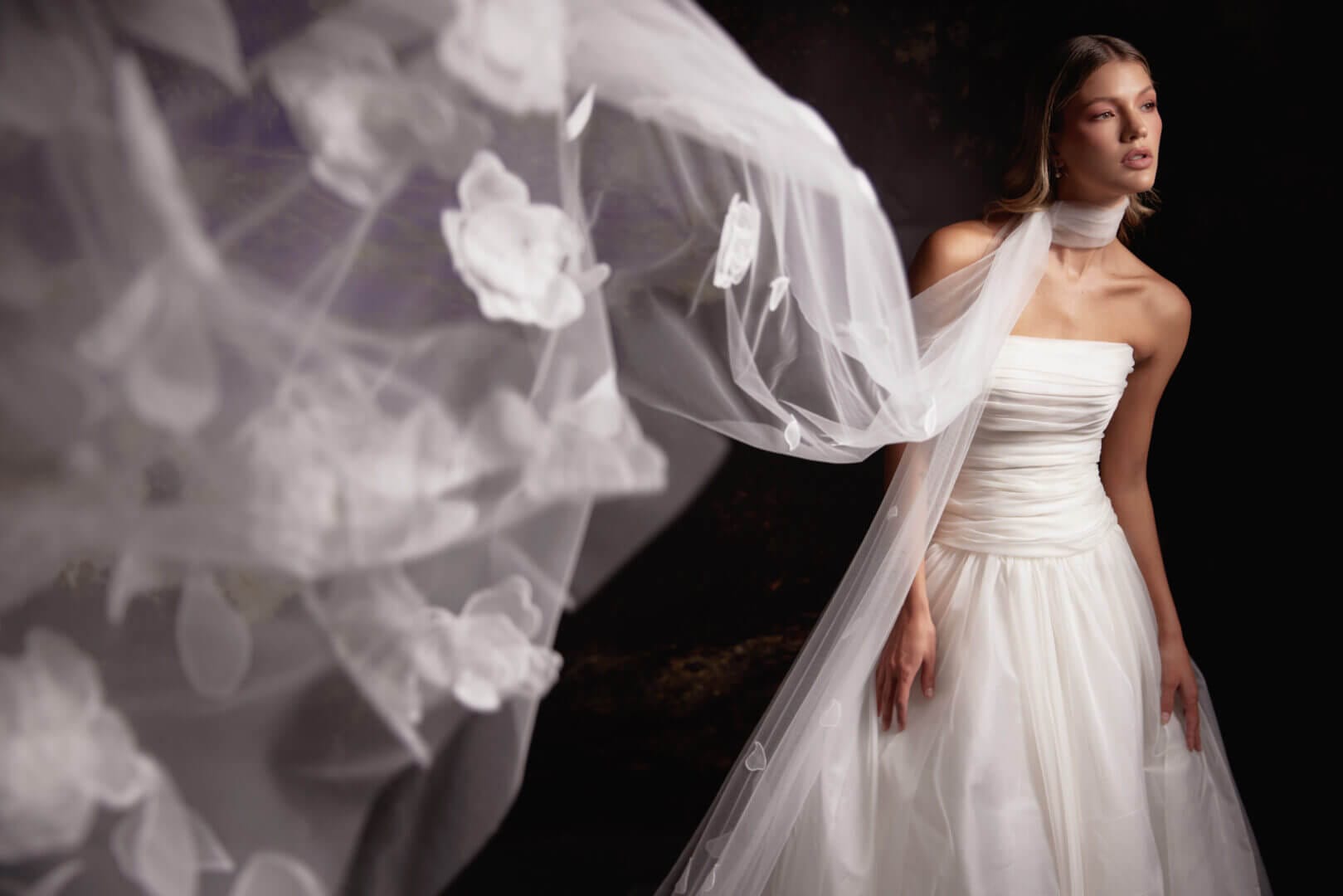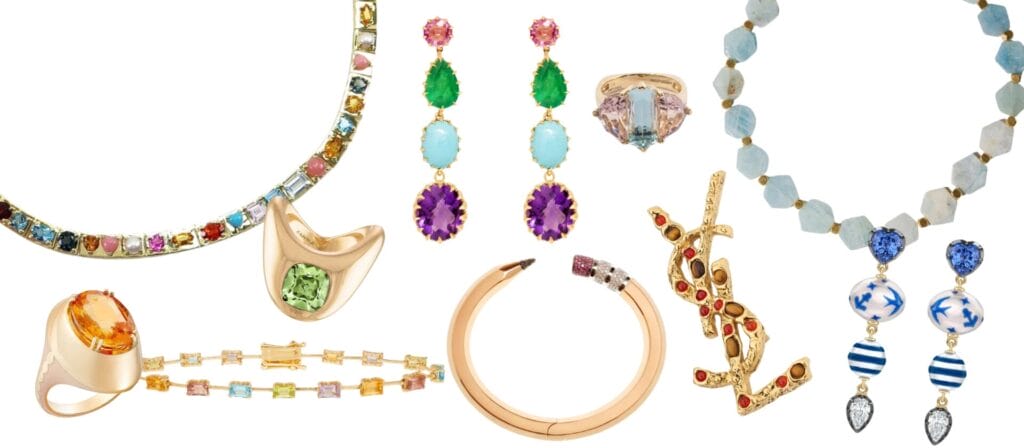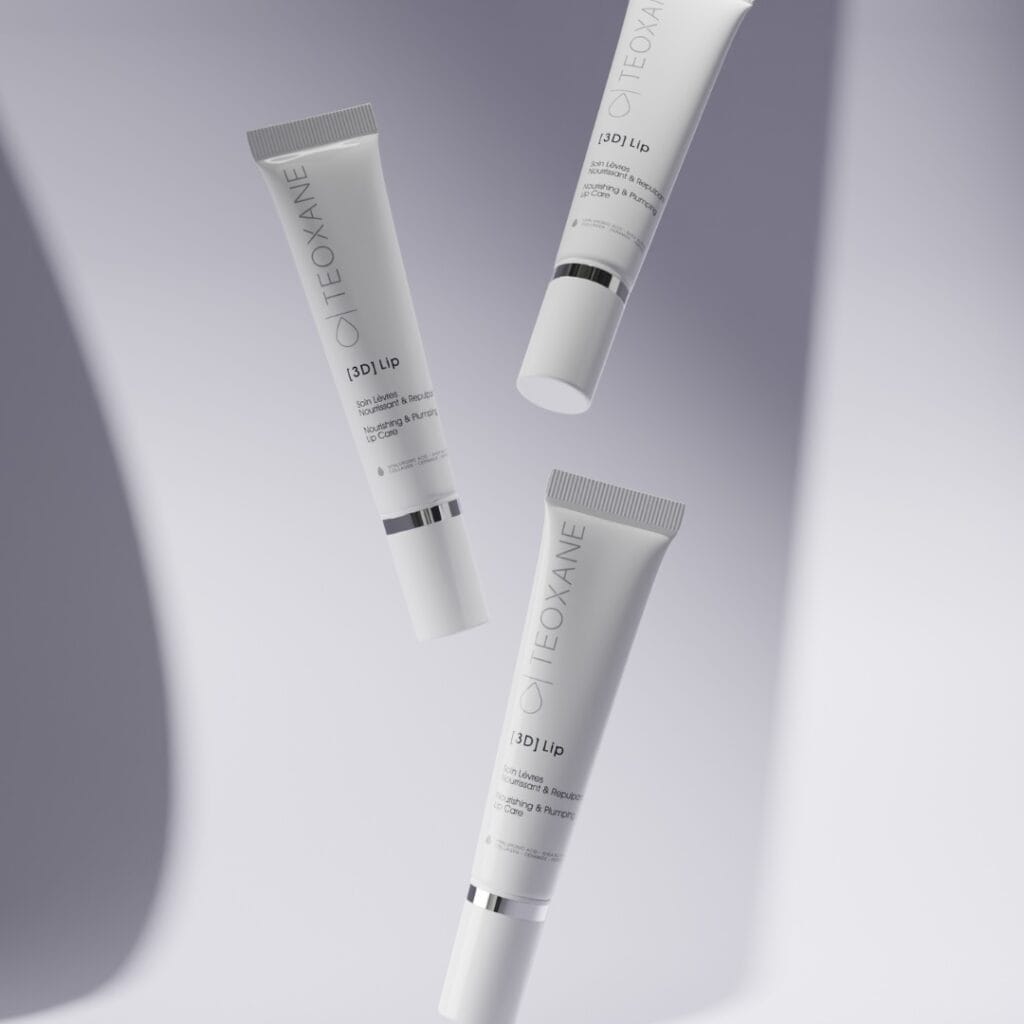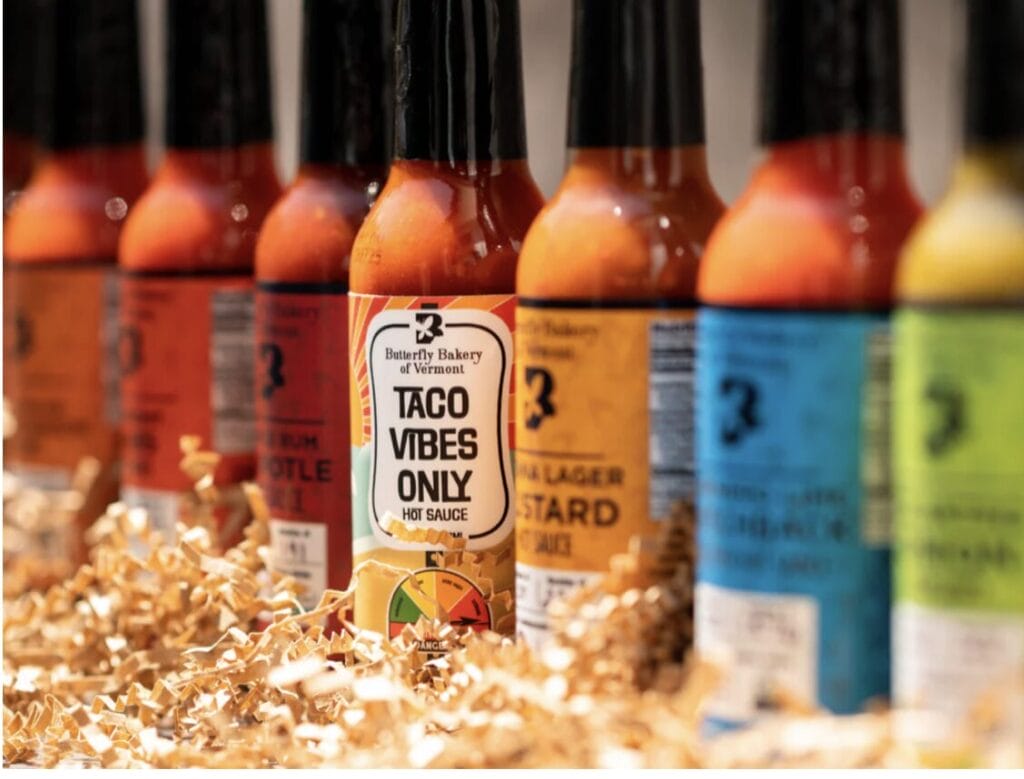The Origins of the Bridal Gown
The tradition of wearing a bridal gown dates back to 1840 when Queen Victoria of England wore a white satin gown for her wedding to Prince Albert. This iconic choice not only set the tone for future royal weddings but also established the white bridal gown as a symbol of purity and elegance. Before Queen Victoria, brides often wore their finest dress, regardless of color.
The First Bridal Manufacturer
In the early 20th century, New York-based manufacturer Amsale Aberra revolutionized the bridal industry by creating high-quality, ready-to-wear bridal gowns. Founded in 1985, Amsale’s approach helped bring couture-level craftsmanship to a broader market, making wedding dresses more accessible to brides beyond royal circles.
The Bridal Business Today
Fast forward to today, the bridal industry is a multi-billion-dollar market. In the U.S. alone, the wedding dress industry generates an estimated $3.2 billion annually. With increased demand for customization, sustainability, and unique styles, modern brides are driving new trends that cater to personal expression and versatility.
A Personal Reflection on the Bridal Industry’s Evolution
As someone who has closely observed the evolution of fashion, I find it fascinating how bridal gowns have shifted from being mere symbols of tradition to becoming powerful expressions of individuality. Designers like Nadia Manjarrez represent this new era of bridal wear, where creativity, craftsmanship, and social consciousness converge. Her ability to merge artistic storytelling with versatile, modular designs speaks to the modern bride’s desire for gowns that reflect both personal style and meaningful values. It’s exciting to witness how the bridal industry continues to innovate while honoring the essence of love and celebration, making each gown not just a piece of clothing, but a canvas for personal expression and cultural significance.
Top Bridal Gown Trends for Late 2024 and Early 2025
- Modular Gowns – Brides are opting for detachable elements like capes, skirts, and sleeves for versatility between the ceremony and reception.
- Sculptural Florals – 3D floral appliqués add texture and depth, creating a romantic and dynamic look.
- Soft Colors – Pastel hues such as blush, soft lavender, and seafoam green are replacing traditional white, offering a fresh, dreamy aesthetic.
- Corsetry – Structured corsets add a regal touch, with sweetheart necklines and drop waists creating modern silhouettes.
- Sheer Layers – Transparent fabrics like lace and tulle allow for an interplay between opacity and transparency, adding sensuality.
- Sustainability – Eco-friendly fabrics and sustainable production methods are growing trends, reflecting the values of modern brides.
- Bohemian Chic – Flowy, boho-inspired gowns with earthy details remain popular for outdoor and destination weddings.
- Bold Minimalism – Clean lines, minimalist designs, and sleek fabrics are making a comeback for brides who want understated elegance.
- Dramatic Ballgowns – Oversized skirts and voluminous silhouettes continue to be a favorite for brides seeking a fairytale moment.
- High Slits and Asymmetry – High slits and asymmetrical designs add a contemporary edge, balancing elegance with a touch of boldness.
These trends are driven by a blend of tradition and modernity, offering brides more options to express their unique personalities and preferences.
Nadia Manjarrez: The Future of Bridal Design
Nadia Manjarrez is making waves in the bridal world with her modern, versatile, and socially conscious designs. Born and raised in Culiacán, Sinaloa, Mexico, Nadia’s upbringing in a creative household shaped her love for fashion at an early age. Her mother’s sewing sparked a passion that led Nadia to pursue a degree in Fashion and Textile Design from the University of Monterrey.
After gaining experience at luxury fashion houses like Marchesa, Badgley Mischka, and Flor et.al, Nadia launched Nadia Manjarrez Studio Bridal in 2021. Operating from her Mexican-based atelier, her designs stand out for their modularity—gowns that transition seamlessly from ceremony to reception, reflecting the desires of modern brides who seek both elegance and adaptability.
What makes Nadia’s brand truly unique is not only her design innovation but her commitment to social impact. She exclusively employs female heads of households in Mexico, creating economic opportunities and supporting her local community.
Nadia’s Design Philosophy
Nadia’s 2025 bridal collection is inspired by the surreal, narrative-driven artwork of Latin American painter Guillermo Lorca. Her use of hand-drawn florals, dramatic ballgowns, and luxurious fabrics like jacquards and lace evokes a whimsical, otherworldly atmosphere. Corsets are a standout feature, emphasizing structure and romance, while seafoam green—a central hue in her collection—adds a dreamy, ethereal quality.
Her work captures the balance between fantasy and reality, offering brides the chance to wear gowns that are as powerful and delicate as nature itself.
Nadia’s Audience
Nadia’s designs appeal to modern, fashion-forward brides who value versatility and sustainability. Her demographic includes women aged 25-40 who are looking for unique, customizable gowns that reflect their personal style. Psychographically, her clients are often socially conscious, seeking both luxury and purpose in their purchases.
With features in top fashion publications like Vogue and Harper’s Bazaar, Nadia Manjarrez is quickly becoming a name synonymous with innovation in the bridal industry. Her ability to blend artistic inspiration, sustainability, and social impact sets her apart in an increasingly competitive market.

In today’s ever-evolving bridal landscape, modern brides are seeking more than just a traditional gown—they want a masterpiece that reflects their personality, values, and unique vision of their wedding day. This is where visionary designer Nadia Manjarrez shines. With her Fall 2025 collection, Nadia draws inspiration from the surreal artistry of painter Guillermo Lorca, merging timeless elements with bold, contemporary touches. In this interview, we dive into her creative process, discussing how art and fantasy influence her designs, the shift towards non-traditional bridal hues, and the powerful social impact behind her brand’s mission. This conversation offers an inside look at the future of bridal fashion and how Nadia is pushing the boundaries to create gowns that are both breathtaking and meaningful.
Joseph DeAcetis: Nadia, your Fall 2025 collection draws deeply from the surreal, dreamlike world of painter Guillermo Lorca. How do you believe this infusion of art and fantasy resonates with today’s modern bride, who often seeks tradition and innovation in her wedding day look?
Nadia Manjarrez: I think today’s brides are all about balancing tradition with a personal twist—they want that classic feel but with something that truly reflects who they are. I was drawn to Guillermo Lorca’s work for this collection because I thought that it represented this balance. His paintings might look traditional at first glance, but then you notice the surreal, dreamlike elements that make you question what you’re really seeing. It’s almost like an illusion where the familiar meets the fantastical, and I felt that idea would really resonate with brides today who are looking for something timeless but with an unexpected edge.


Joseph DeAcetis: The seafoam green ballgown in your collection is stunning and unexpected for bridal wear. What inspired you to incorporate such a bold yet ethereal color, and how do you see brides reacting to non-traditional hues like this?
Nadia Manjarrez: Incorporating a pop of color has really become part of our brand’s DNA—it’s something brides have come to expect from us! This seafoam green felt like the perfect blend of bold and ethereal. It’s actually inspired by those old portrait paintings from the 1800s. I can imagine a woman in that era wearing this color, and I loved the idea of bringing that traditional yet unexpected element into bridal. I think more and more brides are embracing non-traditional hues because it gives them a chance to stand out and express their unique style.
Joseph DeAcetis: Your designs, particularly the use of corsets and structured silhouettes, blend modern elegance with a nod to historical fashion. How do you balance timeless elements with contemporary trends to ensure your designs feel fresh and relevant?


Nadia Manjarrez: For me, it all starts with the construction. Trends come and go, and bridal styles will evolve, but the one constant is how comfortable a bride feels in her gown. It’s so important that she can dance, move, and just enjoy wearing the dress all day long. While corsets and structured silhouettes are trending right now and work beautifully with intricate construction bases, I’m always focused on making sure the gown holds up, even when trends shift. If softer, more flowy silhouettes come into style, I’ll still make sure the construction supports that look.
Joseph DeAcetis: Nature seems to be a strong influence in your Fall 2025 collection, from hand-drawn floral designs to 3D elements. How do you think the connection to nature and these tactile elements add to the emotional experience of wearing your gowns?
Nadia Manjarrez: Nature and florals are such a natural fit for bridalwear—they bring this timeless connection that brides really resonate with. For me, incorporating these hand-drawn florals and 3D elements is about adding texture and depth to fabrics that can sometimes feel too simple. It’s those little details that make each piece feel unique, and I think that’s exactly what brides are looking for: a gown that feels special, but still true to who they are. These elements create an emotional experience, making the dress feel like more than just something you wear—it becomes part of your story.
Joseph DeAcetis: Your journey from working with luxury brands like Marchesa and Badgley Mischka to launching your bridal studio is remarkable. How have those early experiences shaped your approach to bridal design, and what sets Nadia Manjarrez Bridal apart from other brands?
Nadia Manjarrez: Working with brands like Marchesa and Badgley Mischka really helped me discover my identity as a designer and figure out how my style could fit into the bridal world. It was a great learning experience—I saw how established brands operate which sparked a lot of ideas for my own business. What really sets Nadia Manjarrez Bridal apart is the personal connection we have with each dress. We own our own factory, and every piece is made in-house, so there’s this incredible attention to detail. The women in our studio in Mexico have hands-on experience with all our designs, which allows us to make improvements and tailor each gown based on feedback from our brides. It creates this really special, almost bespoke experience.
Joseph DeAcetis: You emphasize the importance of employing Mexican female heads of households in your atelier. Can you speak to the social impact of this decision and how it influences your designs and the brand’s ethos?


Nadia Manjarrez: For me, it’s all about improving the quality of life and creating professional opportunities for the women in my hometown. We want to elevate the local fashion and manufacturing industry to a global level, and bridal gowns are our way of doing that. Everything we design is done in Mexico, and the women in our studio have a huge influence on the final pieces. Whether it’s a suggestion on how to improve the fit or even a design idea, their input is invaluable. In a way, each collection becomes a mix of everyone’s ideas blended with my vision for the brand. It’s a collaborative effort that really reflects who we are and what we stand for.
Joseph DeAcetis: Your brand is known for its modular and versatile wedding gowns, which allow brides to seamlessly transition from ceremony to reception. How do you approach creating these transformative designs while maintaining elegance and cohesion?
Nadia Manjarrez: We always prioritize fit and comfort above everything else when designing. If the design allows for versatility and transformation without compromising those elements, then we go for it. I’m very careful to make sure it feels natural and not like we forced the versatility into the gown just for the sake of it. That’s how we keep the collection feeling cohesive, elegant, and fresh. The goal is for brides to feel like every piece has a purpose and works together seamlessly.
Joseph DeAcetis: The Fall 2025 collection uses a variety of luxurious fabrics like jacquards, corded lace, and “hand-painted” tulle. How do you choose your fabrications, and what role do they play in telling the overall story of the collection?
Nadia Manjarrez: Sometimes we’ll choose fabrics we know our brides love and that have worked well for us in the past, and other times we pick fabrics that really align with the inspiration for the collection. The Fall 2025 collection is a blend of both. For example, the “hand-painted” organza was one of the first ideas we developed because it ties directly into the whimsical, artistic feel of the collection. On the other hand, we used corded lace to bring in a more refined touch. Our faille, which has been a favorite in previous collections, also played a key role since it compliments the overall aesthetic. It’s really about balancing what brides love with what tells the story of the collection.
Joseph DeAcetis: Your work has been featured in major fashion publications such as Vogue and Harper’s Bazaar. How has the exposure shaped your business, and how do you stay grounded in your creative process despite such widespread recognition?

Nadia Manjarrez: The exposure has been amazing for our brand. When our collection gets featured in trend roundups, it’s always interesting to see what catches the eye of editors and how they interpret our designs. It helps us fine-tune the direction we’re heading towards. When the story behind our brand is highlighted, it really helps spread the word about the work we’re doing and why it’s so important. I try to take in what the press is saying, along with feedback from brides and stores, to create collections that resonate across the board. It’s about striking that balance between creativity and making sure the collection feels relevant to everyone involved.
Joseph DeAcetis: As a designer who has experienced both the Mexican and international fashion markets, how do you see the future of bridal fashion evolving, and what role do you hope to play in shaping that future?
Nadia Manjarrez: I see the future of bridal fashion becoming even more unique and diverse. While some traditional elements will stick around, there’s definitely a growing space for every type of bride who wants an outfit that truly reflects her version of love. I hope to be part of that evolution for many years to come. My goal is to drive design inclusivity and showcase the high-quality products that can be designed and made in Mexico. I want to help redefine what bridal fashion can be and highlight the amazing talent we have here, in Culiacán, México.
Conclusion
From Queen Victoria’s white gown to Nadia Manjarrez’s modern, socially conscious designs, bridal fashion continues to evolve. Today’s brides have more options than ever before, with trends like modularity, sustainability, and bold minimalism defining the future of wedding attire. Nadia Manjarrez is at the forefront of this movement, creating gowns that are not only beautiful but meaningful, offering a fresh take on what it means to be a modern bride.
About the Author:
Joseph DeAcetis is a visionary force in the world of fashion, celebrated as one of the finest wardrobe stylists and art directors of his generation. His expertise and creativity have earned him accolades throughout the industry, placing him at the forefront of fashion’s evolution. Joseph’s work seamlessly weaves together style, culture, art, and fashion, with a special focus on the shifting landscape of menswear.
Throughout his distinguished career, Joseph has had the honor of styling and interviewing global icons, including Elon Musk, Justin Bieber, Richard Branson, Katy Perry, Tom Brady, and A$AP Rocky, among others. His expertise extends far beyond styling, as he has also made significant contributions as an award-winning journalist and author. Joseph’s work has appeared in esteemed publications such as Esquire, People Magazine, Forbes, Robb Report, and Playboy, where his deep insights and compelling storytelling have solidified his reputation as a leading voice in fashion journalism.
Joseph most recently served as Creative Fashion Director at Forbes Media, where his dual role as critic and reporter allowed him to explore the intersection of technology and fashion, always championing the transformative power of style. As the founder and president of POTRO, the premier Latinx menswear brand, Joseph is redefining modern menswear with a commitment to celebrating Latinx heritage and craftsmanship.
With an authoritative yet relatable voice, Joseph DeAcetis continues to inspire and influence the world of fashion, setting new standards for success and innovation. DeAcetis’ unique approach to style continues to influence pop culture and shape the industry’s evolving landscape.
Comments, questions, or feedback? visit me at stylelujo.com
Save Article








